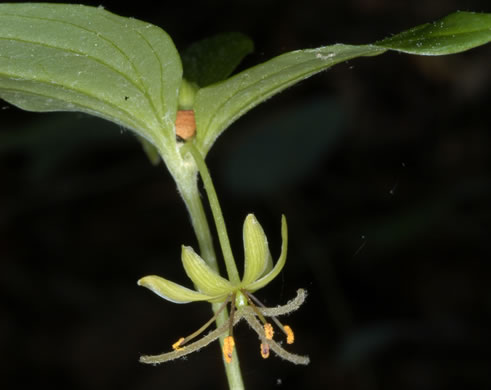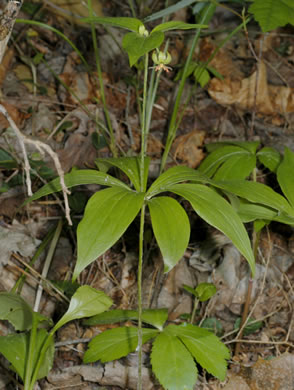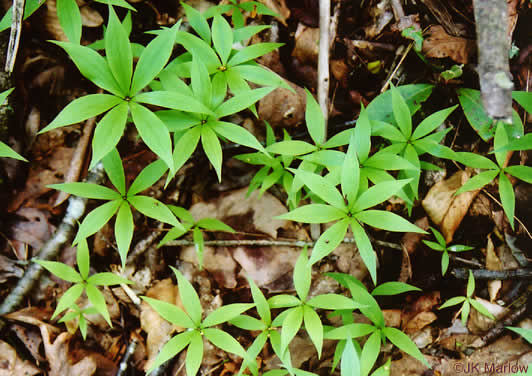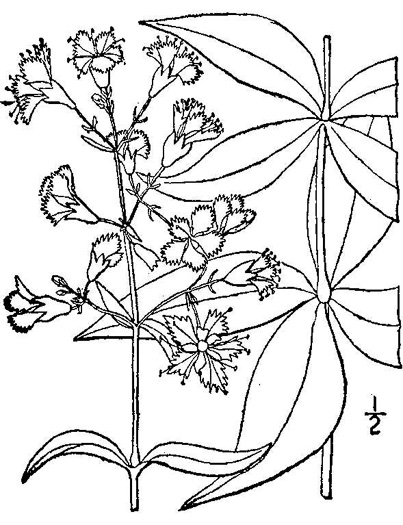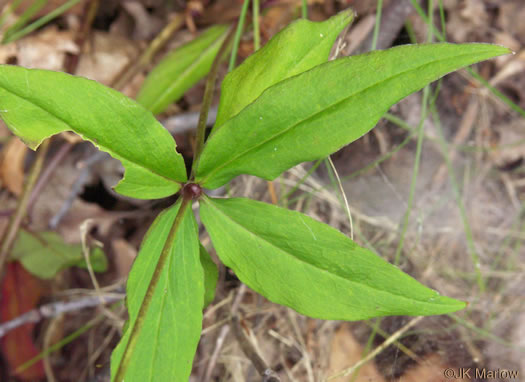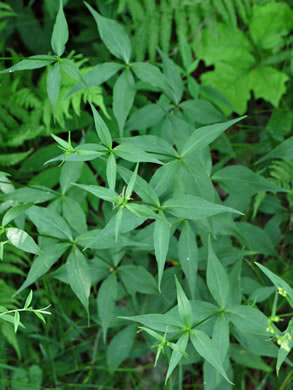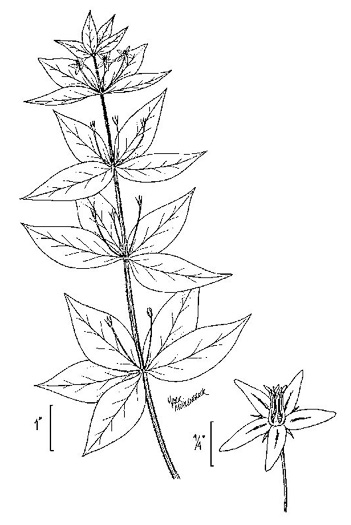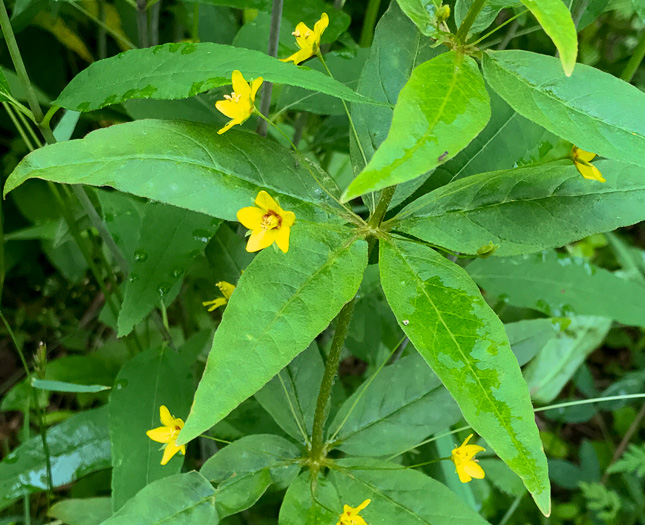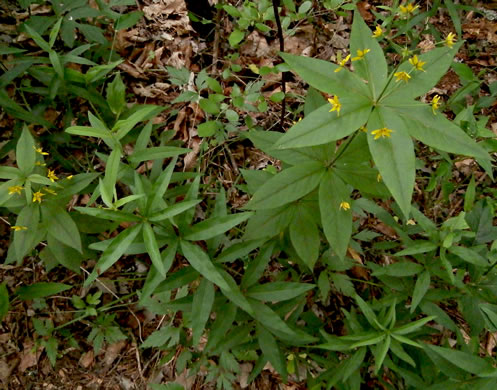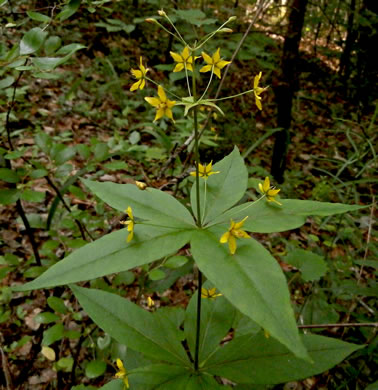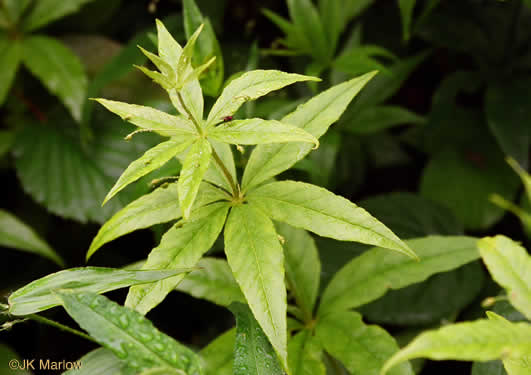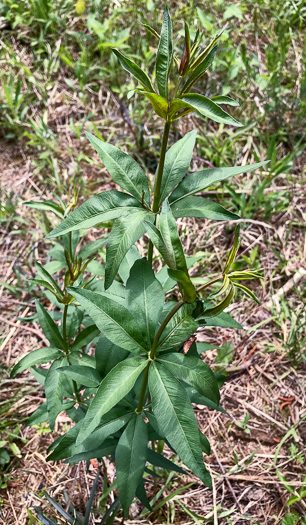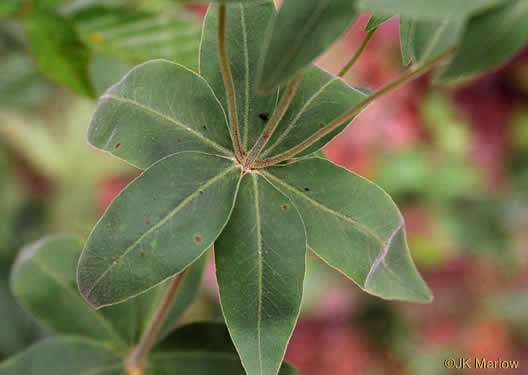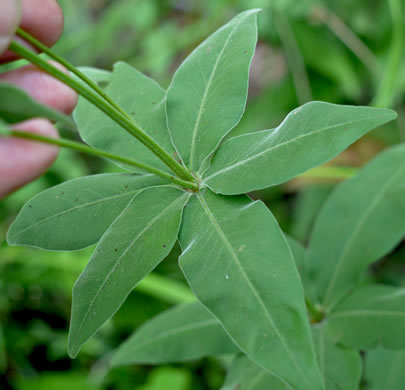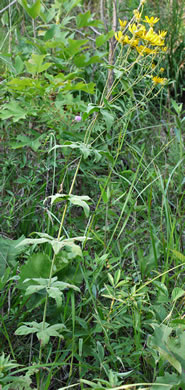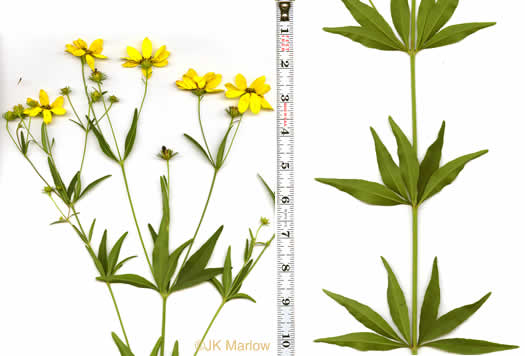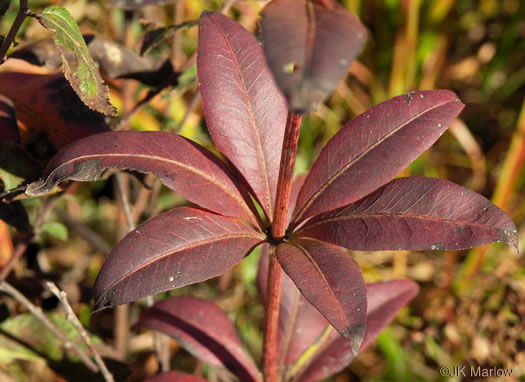Your search found 17 image(s) of leaves of Indian Cucumberroot, Starry Campion, Whorled Coreopsis and Loosestrife.
To see larger pictures, click or hover over the thumbnails.
To go to the plant's detail page, click its name.
 Habitat: Moist forests, usually with acidic soils
Habitat: Moist forests, usually with acidic soils
Leaves parallel-veined, per Vascular Flora of the Carolinas (Radford, Ahles, & Bell, 1968).
Flowering plants have a second whorl of 3 smaller leaves, per Wildflowers & Plant Communities of the Southern Appalachian Mountains and Piedmont (Spira, 2011).
Vegetative plants have a single whorl of 5-11 leaves, per Wildflowers & Plant Communities of the Southern Appalachian Mountains and Piedmont (Spira, 2011).
 Habitat: Dry to mesic forests, rock outcrops
Habitat: Dry to mesic forests, rock outcrops
Unusual for the genus Silene, most of S. stellata's leaves are in whorls of 4, per Wildflowers of the Southern Mountains (Smith, 1998).
 Habitat: A wide variety of forests and openings, including pine savannas of the outer Coastal Plain, ranging from moist to very dry
Habitat: A wide variety of forests and openings, including pine savannas of the outer Coastal Plain, ranging from moist to very dry
Leaves in whorls of 3-7, usually 4-5, broadly to narrowly lanceolate, per Wildflowers of Tennessee, the Ohio Valley, and the Southern Appalachians (Horn, Cathcart, Hemmerly, & Duhl, 2005).
 Habitat: Dry woodlands, dry and dry-mesic forests, longleaf pine sandhills, roadsides
Habitat: Dry woodlands, dry and dry-mesic forests, longleaf pine sandhills, roadsides
Var. major is less common than var. stellata [rigida] and has pubescent stems & leaves, per Great Smoky Mountains Wildflowers (Campbell, Hutson, Sharp, & Hutson, 1962).
The opposite paired leaves are so deeply cut they resemble 6 whorled leaves, per Great Smoky Mountains Wildflowers (Campbell, Hutson, Sharp, & Hutson, 1962).
The opposite paired leaves are so deeply cut they resemble 6 whorled leaves, per Great Smoky Mountains Wildflowers (Campbell, Hutson, Sharp, & Hutson, 1962).
Coreopsis major var. rigida: Stems and leaves glabrous, or essentially so, per Vascular Flora of the Carolinas (Radford, Ahles, & Bell, 1968).

